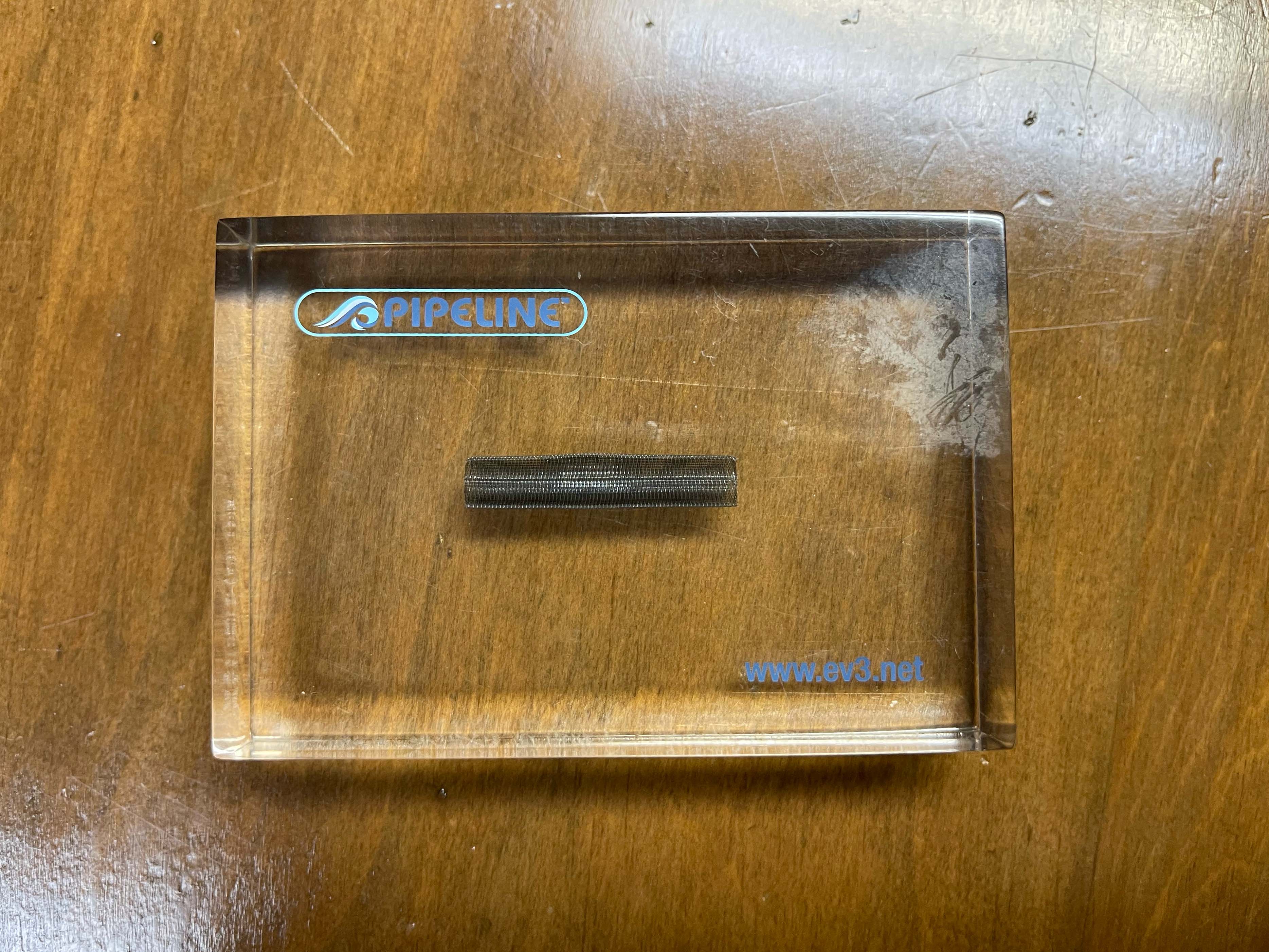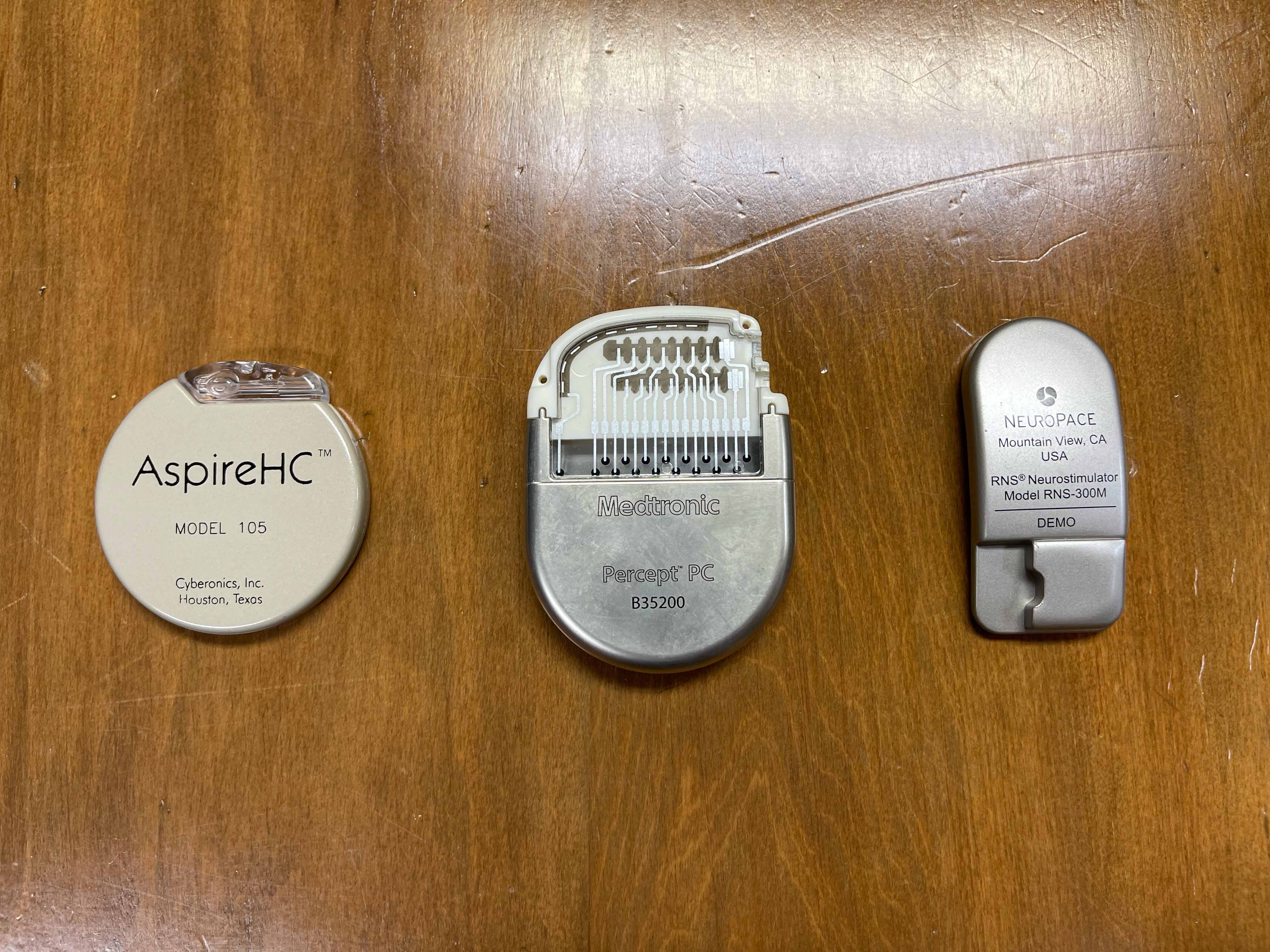By Nathaniel Smith, Editor
“Why do we fall? So we can learn to pick ourselves up.” – Michael Caine
In the blink of an eye, your world could change. A bad car accident, a sudden death or an unfortunate diagnosis could take your everyday life and turn it upside down. Such was the case for Dale Thixton. To raise awareness of November being seizure awareness month, I sat down with Dale recently to discuss his experience with aneurysms and seizures. One day, he was an everyday high school student who loved acting and music more than one could put to words. The next, he was suffering from one of the largest brain aneurysms his doctor had ever seen. And later, Dale began suffering from seizures as well.
Dale Thixton had gone through his entire school career without missing a single day. This was an achievement he was enormously proud of. It was a part of his high school legacy. Rain or shine, in sickness or in health, Dale was at school. However, he began to develop a headache one day. Not just a regular headache, but a constant and painful migraine. This was really unusual for him considering he had never experienced a headache prior to this. Nevertheless, he carried on and pushed through.
“I can remember being totally drained, and we were reading a story out of a textbook in Mr. Hewitt’s class. My face was just in the book, and I remember him even asking me, ‘are you okay Dale?’ And I heard somebody in my class say ‘I think Dale is sick…’ And well, they were right. Something that day was not right.”
Although the day was miserable, he pushed through it and went to sleep immediately when he arrived home.
Eventually, Dale was seen by his primary care doctor. Upon arriving, he was very upfront with his doctor and said, “I feel like there is something growing in my brain. I honestly feel like I am dying.” The doctor’s response was, “No Dale, it’s just allergies. You’ve always had bad allergies.”
“But I knew that wasn’t it,” said Dale. “I knew something was wrong inside, I just didn’t know what it was. I felt like it was killing me… and it could’ve killed me because a brain aneurysm is literally a ticking time bomb.”
Fast forward to May of 2011. Dale made it through graduation with perfect attendance despite him having medical issues that were cropping up. He also had an appointment with a new doctor scheduled just a couple days after graduation.
“I was on the way to the appointment and was thinking ‘alright, if this doctor does not schedule an MRI, I am putting my foot down and demanding one,’” Dale said.
Low and behold, the doctor mentioned nothing regarding an MRI, so Dale did as he promised and demanded one. After receiving the results, it was confirmed that he had a brain aneurysm.
Immediately, Dale was moved to a hospital where he was being prepped for surgery the following morning.
The following morning, Dale was greeted by a group of his close friends who had promised him they would see him before the surgery.
“That next morning, there were 10 people in that room with me,” said Dale. “I remember I had six of my friends that I grew up with, and the other four were my parents, my brother and sister-in-law. It was that morning that I met the doctor that would be performing my surgery. Then it was go time.”
He ended up waking up in the middle of the surgery. At first, this was shocking because he did not know if he was supposed to have woken up. However, then his doctor began to speak to him.
“I was totally strapped down from head to toe at this point. I could only wiggle my fingers and toes and speak. My doctor ended up saying, ‘alright Dale, I need you to hold your breath.’ Well, I did that, and the pressure in my head grew to a level I hadn’t felt before. It felt like it was right on the edge and was getting ready to burst. It was the worst pain I had ever felt in my life,” said Dale. “He then told me to breathe, and the pressure went back down.”
After the surgery, his surgeon walked into the recovery room cracking jokes.
“He was cracking jokes to my left, cracking jokes to my right - not really looking at me at all. Then all of the sudden, he looked at me and said, ‘and you’re going to die. You should’ve died years ago. You should be blind and paralyzed. There’s absolutely no explanation of why you’re here today.'” His surgeon continued by saying, “I’m not even going to give you a life expectancy because you could die right this second.”
Dale’s doctor then flipped his tune altogether and said, “there is one man who can save your life, but you’ll have to travel to the Stony Brook hospital in New York. His name is Dr. David Fiorella, and he is the only doctor certified to use a device called the EV3 Pipeline.”
On July 5, 2011, Dale and his family flew to New York to meet with Dr. Fiorella. Here, they met in a conference room where Dr. Fiorella demonstrated the EV3 Pipeline device to Dale and explained what it does. Essentially, it creates a diversion within the blood vessel so 30-35% of the blood flow moves right past the aneurysm. Paired with blood thinners, this device can work miracles.
 EV3 Pipeline
EV3 Pipeline
After some tests were done, Dale was prepped for his next surgery the following day.
“So, it’s go time. It’s time to put the pipeline device in,” said Dale. “And when I woke up after that surgery, my headache was completely gone. I felt totally normal for the first time in nearly two years. They told me I would be recovering in the hospital for a month, but I was there for less than a week.”
Dale was later invited to California by Dr. Fiorella to join him in giving a speech regarding the Pipeline.
“Dr. Fiorella spoke first, then I spoke, and then we both did a Q&A. There were a few hundred people in the audience, but I didn’t get nervous at all. Once you’re told ‘you’re going to die,’ everything else pretty much stops scaring you,” said Dale.
Dale’s aneurysm is now totally gone for good. Meaning, the pipeline was a great success. However, a new problem began to emerge.
In 2013, Dale began to start experiencing blackouts. These became more and more frequent, and Dale was diagnosed with seizures. After being given a series of prescriptions that did not seem to do much of anything, he had a rough accident.
On March 9, 2014, Dale was driving down a hill in Salem when he suddenly had a seizure and blacked out. During his seizure, he smashed into a utility pole and completely crumpled the vehicle. Amazingly, Dale exited the vehicle unscathed.
“I got out and walked behind the car, and when I looked up, I saw these medics standing there just staring at me with their jaws to the ground. That caused me to turn around and look at my parent’s car. It was completely totaled,” said Dale. “I felt totally normal though. Mike Tyson could punch my face while I’m having a seizure, and I wouldn’t feel it.”
Dale eventually was recommended to a specialist who gave him restrictions such as no driving or swimming until they were able to get things under control.
His seizures are not what most people typically think of when they hear that word. He does not drop to the floor and begin to convulse. However, it is more akin to someone sleepwalking.
“Sometimes I would have ones where I just stare off into space, and sometimes I would have ones where I would just get up and begin doing and saying things that I’m not even aware of,” Dale said.
Thankfully, Dale had a lot of support from his classmates and teachers throughout college. Anytime he would have a seizure, someone was always there to sit with him and make sure he was not going to hurt himself. This continued through his college graduation in 2016.
After consulting with doctors, he was presented with two devices. The first device is called a Responsive Neurostimulator (RNS) and the second is the Vagus Nerve Stimulator (VNS).
 Left to right: VNS, Medtronic Deep Brain Stimulator (DBS), and RNS
Left to right: VNS, Medtronic Deep Brain Stimulator (DBS), and RNS
“‘Which one do you want?’ they asked me,” Dale said.
These devices do similar things, but in slightly different ways. The RNS device is placed on the brain and connected to specific areas to target seizures. It monitors the brain 24/7 and is able to detect unusual electrical activity within the brain that may cause seizures. Upon detection, the RNS releases small bursts of stimulation to help the brainwaves return to normal.
The VNS is a device that is placed under the skin on a person’s chest. Then, an internal wire is connected from the device in the chest to the Vagus nerve in the side of the neck. While the RNS monitors brain activity and sends out pulses only when needed, the VNS sends out pulses of stimulation at regular intervals. However, the person is normally unable to feel the stimulation.
Dale ended up with the RNS, and thankfully his seizures began to decrease after it was installed. He also takes seizure medications regularly.
“Being on medications – you have to find that right spot,” said Dale. “I’m on a good number of things when it comes to seizure medications, but I got to a point where I would go seizure-free for a month at a time. But that was rare. There were also times when I would have around 0-5 per month.”
Although things seemed to be looking up at this point, Dale had begun to struggle mentally. It took a toll on him and the people around him.
“Depression was one thing that I really had to battle. I think a lot of people are afraid to take that step and go see a therapist,” said Dale. “A lot of people tend to think it is emasculating to seek therapy.”
Dale went through two other therapists before he found the right match for him.
“Me and my third therapist hit it off immediately. We would just talk like two guys, and I really connected to him,” he said. “I will say, it might take time to find the right therapist, but don’t be afraid to keep searching.”
Now, Dale says he feels 100% himself. His aneurysm is completely gone, and his seizures are under control. He even stopped seeing his therapist just roughly a month ago. His message to people struggling with similar issues: don’t be afraid.
“Don’t be afraid to question your doctors. Don’t be afraid to seek out a second opinion. If you feel like you have a doctor who’s not helping you, don’t be afraid to find a new one,” Dale said.
He went on to address mental struggles, “there are going to be times in your life when things will be bad. Everything will be hopeless and overwhelming, but you have to find that inner fire. My inner fire might make you laugh, but I have always been fascinated with superheroes and comic books since I was a child. My all time favorite is Batman. He has always been number one for me.”
Dale’s favorite Batman rendition is “The Dark Knight” trilogy with Christian Bale. A particular moment that resonates deeply with him is in the third movie where Bruce Wayne can be seen climbing his way out of a deep pit in the ground. In the scene, a crowd can be heard chanting, “deshi basara!” which translates to, “he rises!” It is a very climactic and emotional point in the film, and it is a direct parallel to how Dale felt as he pulled himself out of depression and made his way through all of the trials he has gone through in life.
“I want to say thank you to the community of Salem, and a thank you to my friends, family and doctors who have helped me have a life worth living for. Specifically, a thank you to my late grandmother Laura Thixton, to my niece and nephew Gabrielle and Jack Thixton, and to my older brother and sister-in-law Scot and Julie Thixton. Last, but certainly not least, I want to thank my father Tim Thixton and my beautiful mother Barbara Thixton. Thank you for always being there for me through the very thick and thin. Much love to all those that I named,” said Dale.
With November being seizure awareness month, it is incredibly important for individuals struggling with seizures to learn about the devices that are available in addition to the EV3 Pipeline that is now used to treat aneurysms. So this month, wear purple to raise awareness and spread the word about devices such as the EV3, RNS and VNS! As Dale can attest, it has quite literally been monumentally life changing.




